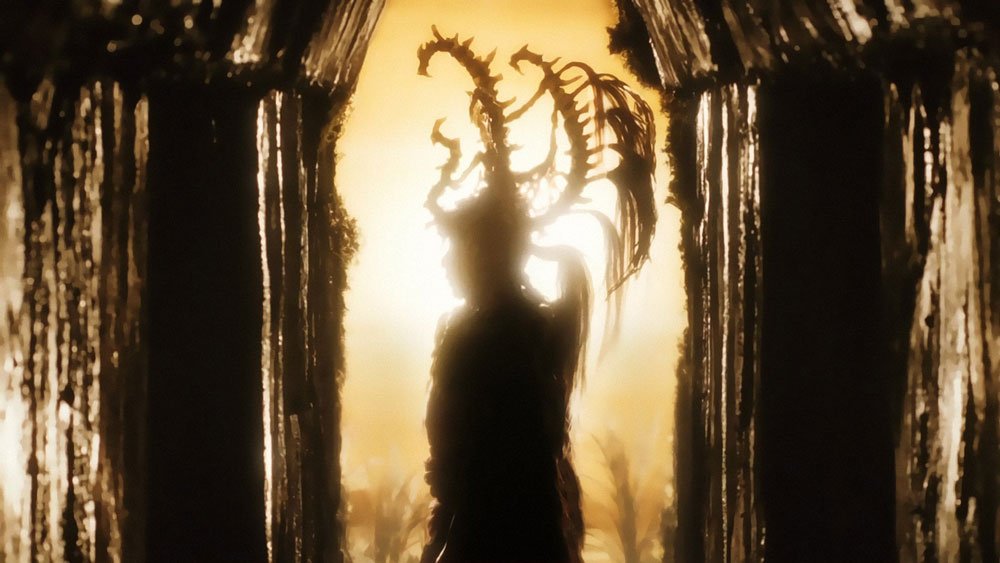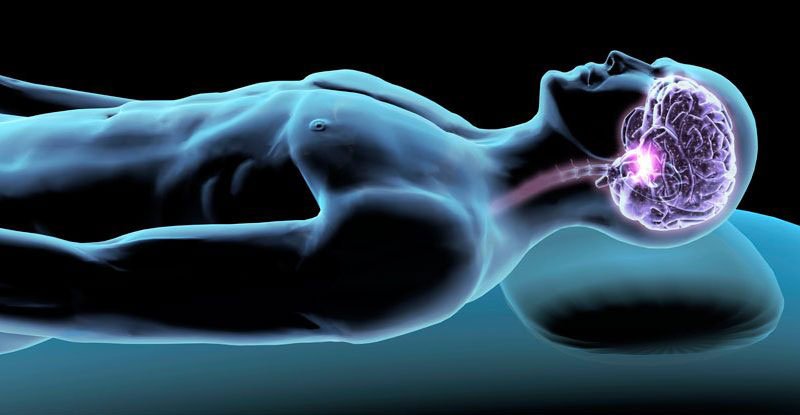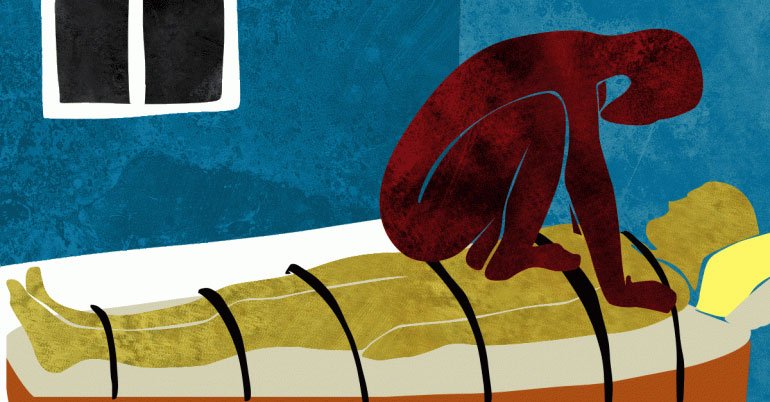Hey friends, from today I am going to start a new series named “Simple Questions”. I shall be discussing a series of very simple questions but answers won’t be that simple. Some questions will be such that, even science will fail to provide a perfect answer. Hope you enjoy the episodes.
Today’s episode is about a very simple question “Why do we dream?” Will answer be that simple? Let’s see. ;)

Why do we have dreams? What purpose do they serve? — you may have wondered about such questions at some point in your life. Well, you are not alone; even the greatest philosophers had been troubled by these questions for thousands of years. With the development of Science and Technology the philosophers became scientists. In modern era also, scientists were fascinated about dreaming and carried out research and study for it. Different scientists gave different theories, but still we are not able to find an accurate reason which can be accepted unanimously.
As there is no perfect theory regarding it, so first discuss them one by one and try to find a conclusion at the end.
Wait, before going to these complicated theories, first let's see what a dream is?
What is a Dream?
Dream is basically the images, visuals or ideas (thoughts) that we experience during sleep. It may be sometimes understandable and very much realistic, but in other instances very much confusing and illogical.
- The study of dreaming is called "Oneirology".
So, why do we Dream? What is its Purpose?
We spend one third of a day sleeping and dreaming, but still we haven't found the right cause of dreams. But we should not forget that science is still studying the functioning of brain and not even found the right cause of sleep. So it is obvious, dream is a bit more complicated than sleep and scientists will take more time to unravel the truth.
But still many theories have been put forth and experiments are being carried out. According to some researchers, dreams serve no real purpose while others believe that dreams are important for physical, mental and emotional well-being.
Now let’s discuss some of the most prominent dream theories.
1. An Evolutionary Defense Mechanism or Threat Simulation

Some experiments and research have suggested that like many other animals, humans may also have had the “playing dead” or “pretending dead” mechanism in primitive stage. This is concluded from the fact that there is a convincing similarity between a man dreaming and an animal pretending dead to befool its enemy. According to this theory human dreaming is very much related to the playing dead mechanism or tonic immobility found in some animals like sharks, lizards, rabbits and other small mammals and birds.
During a REM (Rapid Eye Movement) sleep when we dream our brain behaves normally but our body remains in complete immobility as chemicals like dopamine which control movement are completely shut down. Tsoukalas suggests that this is similar to what some animals do when they are confronted with a sudden danger.
When rabbits are confronted with apparent threats, they suddenly become rigid and unmoving (a temporary paralysis). In fact, they can often seem to be completely dead, which is usually their last line of defense when “fight or flight” is no longer an option.
So it is possible that our ancestors may have this "playing dead" mechanism which retained even after evolution but in a different form which we call “dream”.
There is a sister of the tonic immobility theory, i.e. "Threat Simulation Theory". Threat simulation theory is proposed by a Finnish neuroscientist, Antti Revonusuo. According to him,
"The biological function of dreaming is to simulate threatening events, and to rehearse threat perception and threat avoidance".
So a person having this type of dream will more likely survive if he faces similar threat in waking hours. But, unfortunately this theory does not explain my recurring dream of eating Momos!
2. Problem Solving and Idea Generating

Researchers like Deirdre Barrett suggest that dream is a world where we can solve problems and even bring new ideas more effectively than we are awake. This is because at that time the mind remains in an isolated and stress-less condition, it doesn't have to take and process a lot of input as it does when we are awake.
You may or may not have experienced solving a problem in dream. But, many of our greatest scientists and mathematicians have definitely experienced it and even have made many groundbreaking discoveries in their dreams. One of the greatest mathematicians, Srinivasa Ramanujan, said that the Hindu goddess Namagiri would appear in his dreams, showing him mathematical proofs, which he would write down when he awoke.
And the charismatic professor, Dimitri Mendeleev, discovered the "Periodic Table of the Elements" in his dream. He said
"In a dream I saw a table where all the elements fell into places as required. Awakening, I immediately wrote it down on a piece of paper".
Even other scientists like Rene Descartes, Otto Loewi, Alfred Russell Wallace etc. have made remarkable discoveries with the help of their dreams.
What will you say about these shocking facts? ...now don't say that " Aliens" helped them through their dreams — as some TV series have suggested. :D
There is another theory similar to this, called “Oneiric Darwinism”, according to which we generate new ideas and thoughts in dreams. According to the psychologist Mark Blechner, the reason we dream is to:
“Create new ideas, through partial random generation, which can then be retained if judged useful”
Besides ideas, emotions are also a part of this theory. Some researchers suggest that in dreams we face various situations and try to react to them through different emotions which help us to figure out the best way to react to a certain situation.
3. Psychoanalytic Theory

This theory is proposed by the psychoanalyst, Sigmund Freud. He was probably the first person to do a scientific study on dreams in the early twentieth century. According to his “Psychoanalytic Theory”, dreams represent those unconscious desires and thoughts which are suppressed by us during conscious state. In his book “The Interpretation of Dreams”, Freud writes that dreams are
“disguised fulfillments of repressed wishes”.
After studying the dreams of his patients, he suggested that dreams are nothing but wish-fulfillments. Whatever may be the dream, it may be symbolically seen as a desire you want to fulfill.
Say for example, you had a bad and terrifying dream about your own death. Well, why will that be a wish-fulfillment? Maybe Freud would say, you are facing a lot of difficulties in day-to-day life or have conflicts with near and dear ones, that can easily be resolved when you will not be there.
Freud’s theory resulted in the popularity of ‘dream interpretation’. Freud helped many of his patients to deal with their hidden emotions buried in consciousness.
4. Activation-Synthesis Theory

Besides Freud’s psychoanalytic theory, there is another popular theory proposed by J. Allan Hobson, which he calls “Activation-Synthesis Theory”. This theory suggests that during a REM sleep many circuits in the brain get activated which causes stimulation of the limbic system that’s involved with emotions, sensations and memories. The brain tries to process and interpret this internal activity and attempts to find meaning in these signals, which results in dreaming. In a nutshell, dreams are the subjective interpretation that brain tries to make out of the random signals generated during sleep.
Although the dreams are the results of these random firing in the brain, Hobson does not believe that they are meaningless. He suggests that dreaming is
“our most creative conscious state, one in which the chaotic, spontaneous recombination of cognitive elements produces novel configuration of information: new ideas”
5. Information-Processing Theory

This is one of the major theories that deals with "Why do we sleep?". Sleep allows the brain to process all the information and data that it has collected throughout the daytime. Experts suggest that dream may be an outcome of this information-processing. In the daytime we deal with various information and memories, our sleeping mind creates various images, visuals and ideas to manage all these activities going on inside our brain. Studies have shown that people remember what they have learnt better if they dream after learning it.
This theory is supported by recent studies on trauma. It has been seen that people who sleep just after a traumatic experience, tend to remember and be haunted by the traumatic experience more likely. So it is suggested by the experts to keep the traumatized people awake for some hours after such experience.
Jie Zhang's “Continual Activation Theory” suggests similar effect of dreams. According to Zhang, our brain keeps on storing various information and data that it comes across, whether we are asleep or awake. Only the difference is that, during conscious state brain stores all the information and data on a short-term temporary storage but when we sleep, it selects all the important information and transfers them to permanent (long-term) memory. So, the memories which are being stored permanently flash through our minds as dreams.
Conclusion
After discussing so many theories, we can confidently say that dreams are not useless. They are important for at least our mental well-being. Dreams are based on the events and data that we come across. We cannot have a dream of an alien planet with alien creatures until we have seen it in movies. It may be possible that our dreams are made out of the random electrical impulses of the brain. But, human brain is so much smart that it creates something meaningful out of that random data. Like when we see uncountable random stars in the night sky, our brain may visualize some pictures from that random placements of stars.
Well, randomness is the key of the formation of new things. Life emerged on earth due to random bonding of some elements. And we evolved as human beings. So, randomness may create something new, like what happened to many great scientists. August Kekulé discovered the structure of ‘benzene’ in his dream which was a breakthrough in the study of chemical bonding and opened up new field of Aromatic Chemistry.
So dreams can be useful if we try to find some new ideas through them. A Dream is another world of freedom and randomness, if you try then you can take control of it. Some researchers even say that our subconscious mind keeps on creating dreams day and night, but we have access to it only when we sleep.
Some Fascinating Facts About Dreaming
Lucid Dreaming

Lucid dreaming is that type of dreaming, when you become aware of the fact that you are dreaming. During a lucid dream you can control the dream as you like. You will be the king of the dream world. If you practice dream checks (like counting your fingers, checking printed texts) regularly in real life, it is possible that you will do the checks also in the dream. Once you find that you are dreaming, you can enjoy it to the full. As you become more expert in lucid dreaming, your brain also becomes smarter in creating realistic dreams. So many experts of lucid dreaming sometimes face difficulty in differentiating dream from real life.
Sleep Paralysis

Sleep paralysis is a state when your body gets asleep while your brain remains awake. In that situation you cannot speak or move your muscles. You are actually trapped in your own body. This case is somewhat similar to what we discussed in the first theory of dreaming i.e. tonic immobility.
Astral Projection

This is what we call a willful out-of-body experience. [You must have seen it in the MCU movie, "Dr. Strange"]. I don't believe much in this idea, but many people have claimed to practice it. Its accounts can be found in many ancient and mediaeval literature. Astral projection can be practiced while we sleep. Many say that it can be achieved after we become expert in lucid dreaming. Some say that attaining sleep paralysis through meditation and focus is the first stage of learning astral projection. There are various methods discussed by different people who claim to have experienced it. But what is the truth we don’t know.
Image Source: Getty Images
I hope you liked the article. Stay tuned, more awesome episodes coming soon. :)
Thanks.
